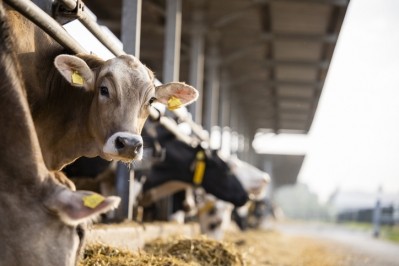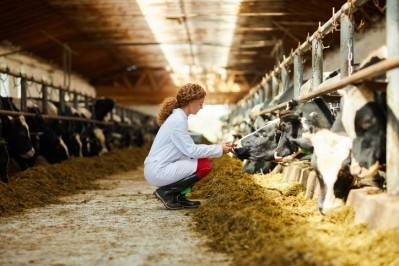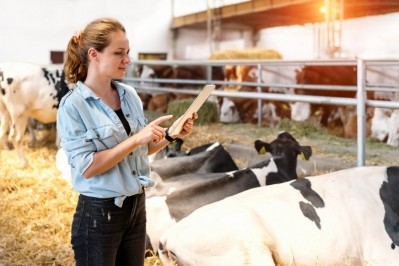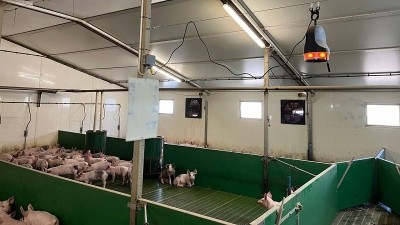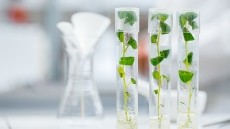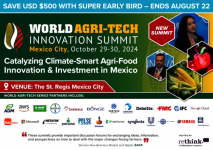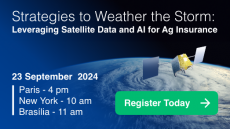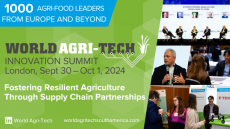Virtual fencing tech: smart solution or just shocking?

From its origins in New Zealand, Halter is now poised to collar a decent share of the US market.
Halter’s virtual fencing technology has already been rolled out in California, Oregon, Colorado, Texas and Louisiana, with new customers set to go live in more states in the coming months.
There are now 200,000 cattle under Halter’s management in the US, New Zealand and Australia.
“Halter technology is a powerful system that helps users precisely manage pasture to lift the performance of the animals grazing it,” said Craig Piggott, Halter’s founder and CEO. “For years farmers in New Zealand and Australia have generated significant benefits from utilising the technology, and we’re excited to bring these same benefits to US cattle ranchers.”
How virtual fencing (and virtual herding) works
Virtual fencing systems typically consist of GPS-enabled collars worn by livestock and a software interface used by ranchers. The collars track the animals' locations in real-time and can be programmed to create invisible boundaries, allowing farmers to manage grazing without traditional physical barriers like fences.
When an animal approaches a virtual fence line, the collar emits an audio warning. If the animal continues to move towards the boundary, a mild electric stimulus is delivered, like a traditional electric fence but less intense.
Halter’s technology uses a combination of audio, vibration, and electrical cues to guide cows within designated grazing areas. The collars emit a benign sound (or a ‘piezo’) when cows approach the virtual boundary, and if they ignore this cue, a low-energy pulse is delivered to encourage them to return within the designated area. This method relies on associative learning, where cows learn to respond to these cues, promoting their ability to predict and control their movements.
It is stressful for animals?
Some welfare groups have raised concerns about the practice, such as potential stress and impact on animals' overall health and wellbeing due to frequent movement. They also cite gaps in knowledge about long-term use and outcomes, particularly for species other than cattle, and the need for adequate safeguards to limit potential harm to animals.
But not all welfare groups are opposed to it. Studies, such as those conducted by the Tasmanian Institute of Agriculture, show that cows quickly adapt to the Halter system. In trials, most cows learned to respond to the cues within a day, and over time, the frequency of electrical pulses decreased as the cows became more adept at recognising and responding to the cues. This suggests that the Halter system not only maintains but can potentially enhance animal welfare compared to traditional fencing methods.
Virtual fencing benefits
Better pasture management:
- Can allow more precise rotational grazing and more efficient use of grassland
- Can reduce soil compaction and degradation by promoting even grazing patterns
- Farmers can quickly draw new grazing areas using a mobile app
- Enables remote management of livestock movements
- Reduces time spent on fence maintenance
Environmental:
- Can improve soil health and nutrient recycling
- Can help restore natural landscapes by giving access to previously inaccessible areas
- Can protect water sources by preventing contamination and erosion without physical fencing
- Promotes biodiversity by allowing more natural animal movements
Cost-Effectiveness:
- Can be more cost-efficient than building and maintaining physical fences, especially in difficult terrain
- Reduces need for additional water infrastructure by using existing water sources as overlapping areas
Animal Welfare:
- Potential to maintain or improve livestock welfare through better management
- Allows for quick relocation of animals in case of environmental hazards
Disadvantages
Use of aversive stimuli brings ethical considerations
Needs training and proper implementation to ensure animal welfare
Halter stresses that the system is designed to enhance animal welfare by allowing cows to make choices about their movements, reducing stress associated with traditional herding methods. The tech also intends to help farmers manage their animals’ health and welfare, with one dairy product offering heat detection and 24/7 health monitoring. This detects early signs of illness in animals, alerting farmers to take action if needed.
“Ranchers have real-time, 24/7 access to their cattle and pastures via an app to quickly and easily put cattle where the grass is without moving fences or physically herding cattle, offering unparalleled oversight of their herds in real-time,” Halter’s communications lead Ashleigh Gilchrist told AgTechNavigator.
As it eliminates the need for physical fencing and the associated maintenance, it can reduce labour costs. Depending on the farm size, Halter says customers save on average 20-40 hours per week. And by enabling more precise pasture management, virtual fencing can play a significant role in regenerative land management.
Ranchers can grow and harvest more grass, better protect soils, increase soil carbon sequestration to reduce net emissions, retire unutilized land without reducing stocking rate, and prevent animals from entering protected waterways.
A unique feature of Halter's system is its ability to virtually herd cows to the milking parlor without human intervention.
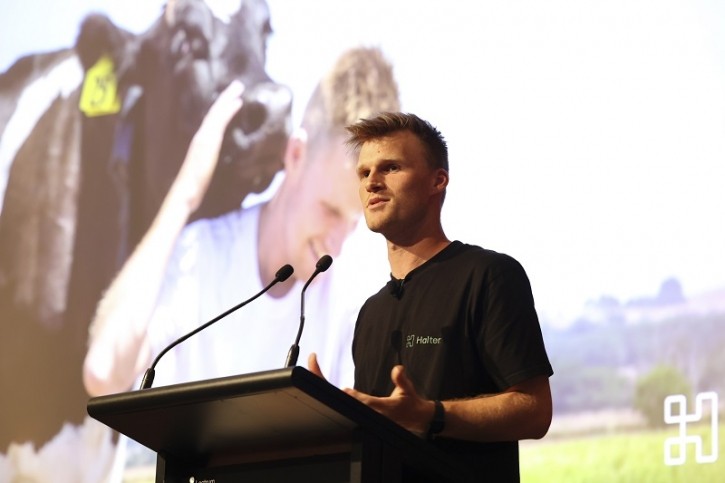
Good vibrations?
Combined, Halter’s virtual fencing and virtual herding features allow farmers to grow and harvest more grass, unlocking "unconstrained rotational grazing,” said Gilchrist.
Halter is designed to be an “all-in-one system”, she explained, combining virtual fencing, virtual herding, pasture management, reproduction performance (dairy only), and animal health monitoring (dairy only).
“Our mission is to empower farmers to run more productive and sustainable farms.”Conventional farming has often meant a trade-off between productivity and sustainability, she said. “Halter enables farmers to increase both of these simultaneously.”
On the environmental front, she added that virtual fencing reduces nitrogen and fertiliser inputs and helps farmers to manage fresh waterways seamlessly and more cost effectively than physical fencing.
“Our core value proposition is that we enable farmers to grow and harvest more grass,” she said.
“Most farmers are constrained by paddocks, physical fencing and the practicalities of farming, which means they’re not getting the full ROI from their grass. Halter gives more time, tools and insights to be great pasture farmers with happy, healthy stock.”
